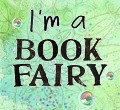What makes your spirit sing? What connects you to the God of your understanding?
When I left the church, I found the mural – a very different way to reflect God’s space in the world. It was painted by four graffiti artists who were asked to collaboratively interpret what faith means to them. It’s pretty far removed from stained glass and organ music, but it no less reflects the sacred spaces in which God dwells. I was moved by the colour, the vibrancy, and the energy it exudes. (To learn more, be sure to watch the video on this page.)
After the mural, it was off to the AGO and the much hyped King Tut exhibit. I hadn’t really cared about the exhibit at first, but it seemed like a once in a lifetime experience, so I couldn’t resist.
Talk about awe-inspiring! In a way I wasn’t expecting, I was moved almost to tears by the more than three thousand year old artifacts, jewellery, sculptures, and even the wicker bed dear ol’ Tut may have slept on.
I pulled out my notebook and started jotting down details I didn’t want to forget. Mostly, I was inspired by what careful artistry was demonstrated in almost every piece. This wasn’t crude or rudimentary – this was intricate and absolutely stunning. Tiny gold beads blended together to make a collar or necklace, carved statues of rulers and gods and princesses, gold finger and toe coverings peeled from Tut’s mummy, and gold sandals meant to carry him into the afterlife.
What struck me as I stood there in awe was how much of the intricate, beautiful artisanship was meant primarily to connect people to their gods. Not only were there sculptures of several Egyptian gods, as well as artifacts (urns, alters, etc.) used in worship of them, but there were so many items in Tut’s tomb that had been placed there specifically to prepare him for the afterlife when he would join the gods in their heaven. Many of the items were plated with gold, because the believed gold to be “god’s skin”.
Something powerful and a little mysterious struck me right there in the gallery. If I hadn’t been surrounded by so many people, I might have dropped to the floor in tears.
For thousands of years, people have been searching for God and trying to connect to the sacred in one way or another. There has always been, in people’s hearts, a sense of “the other” and, along with that, a deep, deep longing to find a connection to whatever it is.
And for thousands of years – because God is a God of beauty, majesty, and creativity – one of those connecting points has been through art. The Egyptian artifacts, the stained glass windows, and the mural – all were saying the same thing. “We long to be witnesses of the presence of God in the world. This is as close as we can come to reflecting what that means.”
Part of my emotional reaction was the result of many years of suppressing this in my own life. In an evangelical protestant upbringing like I’ve had, art rarely plays a central role in spiritual practices or in the way that people seek out God. It’s not that art was seen as bad – it was just kind of frivolous and wasn’t worth as much as traditional prayer and service and the ultimate good of “leading people to Christ”.
There has been a longing in me that’s hard to describe. A longing to paint, to create, to express myself and be true to my own spirit. After years of not fully understanding it, I know that this longing is one of the ways God calls me into meaningful relationship.
Not long ago, my friend Stephanie profiled me in an article about women in leadership. After asking a few questions about what art means to me, she ended the article with my quote, “art connects me to God.” I was so happy to see it conclude that way. It took a long time to learn this, but it sure does feel good now that I’m a little closer to understanding.











I saw King Tut’s exhibit at ROM when I was in Grade 6. Oddly life changing though I still haven’t figured out how.
The Holy Longing you describe here is something I think a lot of people can identify with.
We didn’t go to church when I was a young child, but I had no problems envisioning God on my own. In my mind, God wore bright, vivid orange robes — the color of the second chakra, creativity. Years later, I found The Artist’s Way, and Julia Cameron’s descriptions of God as “Great Creator” sounded like beautiful church bells in my mind. Creator Spiritus is Latin for “Holy Spirit.” When I consider all of this separately, along with the idea that we are spiritual beings having a human experience, I believe creating IS a spiritual practice. In western society in particular, I think the spirituality that gets the most press is more cerebral, presented in a rigid box tightly wrapped in dogma. The physical embodiment of spirituality and creativity as a spiritual practice has been — I don’t want to say “forgotten,” because that seems too strong a word. Perhaps “neglected.” Yes, too long neglected by the mainstream.
To paraphrase the Dalai Lama, there are as many paths to God as there are people. Creativity is definitely one of them!
hi heather! awesome post – thanks for sharing!
this line, from above, really stuck with me.
*This is as close as we can come to reflecting what that means.*
I love the existentialism of this topic & that line respresents it so perfectly for me. Its so true, that connection we all have in unknowing, the attempts for connection and acknowledgement of the other that we all share. I love that about early art and architecture. It reminds us of our not so distant history we all share, as well as the commonalities we all share as human beings.
happy saturday 🙂
I’m deeply saddened that you experienced the church of your youth as something restrictive and anti-creative. The evangelical protestant church I attend has many artists, musicians and writers in its congregation and I’ve seen God worshipped in many different ways. Celebrating God through the arts informs the building of the tent of meeting in Exodus, and it was what built the great cathedrals and churches of medieval Europe and provided the inspiration for so many great paintings. We often use those paintings in our services to bring life to a Scripture reading.
I’ve seen the King Tut exhibition in Chicago and I spent so long looking at some of the artifacts that my family gave up on me. They are truly breathtaking. I think that what’s so special about them is that they were made with eternity in mind, and that’s something we should all learn.
It’s a gift to find our own authentic connection to the divine, and sharing it in your post is a gift to others. Thank you.
The creative spirit and the holy spirit are so close together they sometimes seem as if they’re the same thing. Whatever their relationship may be, I think that in the act of creation we show ourselves to be made in the image of God. And the careful craftsmanship you describe in the ancient artifacts is a kind of sacred effort.
Thanks for this reminder about following our holy longings.
I have finally reached a point in my life where it’s okay for me to say “I have no idea” when asked about gods, a particular God, or spirituality. I sought for and struggled with ideas of “God” for quite a while, and never found the peace and comfort others described. It has only been recently, when I decided to let the issue go altogether that I have been at peace with myself. It is a deep-down peace that has nothing to do with circumstances, which of course go up and down.
So when you ask questions like, “What makes your spirit sing?” or, “What connects you to the God of your understanding?” or when I encounter questions like that on other spirituality/creativity-oriented sites (which I enjoy in spite of my own lack of spirituality), I have to think of ways to reframe them, because I no longer relate to the world that way. So if you’ll allow me…
“What makes me sing on the inside?’ “What connects me to this moment and what is happening right now, where I am?” And I think you have really nailed it on the head. It’s beauty, both natural and human-made. It’s looking for that beauty in unlikely places and finding it. And creativity, yes!
Sorry–that last comment listed me as a question mark — I’m Amy! Or maybe I am a question mark…
Great post Heather. I too can be so moved by the beauty of art and music, truly God-given talents.
have been catching up on bloglines with all “my” bloggers posts…
and thought I’d comment on this one as I just read a Natl Geographic about Tut’s father. His remains (not mummified) were recently verified.
The father attempted and implemented change– such as changing the God from the animal headed human shaped figurines… to the sun. Because it was something that was real and meaningful and life giving . AND… he tried to influence art. Away from the rigid (& geometric?) designs and into more natural forms. Like flowers and color.
He died very young and Tut took power, and returned to the old ways and the old Gods.
I know how easy it is to do that. sigh.